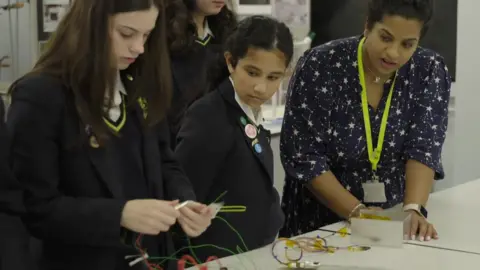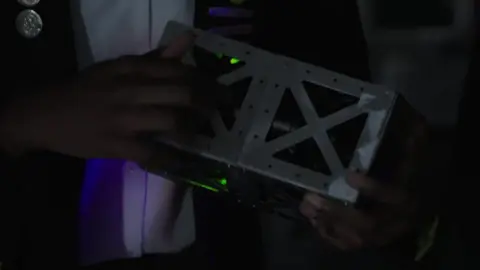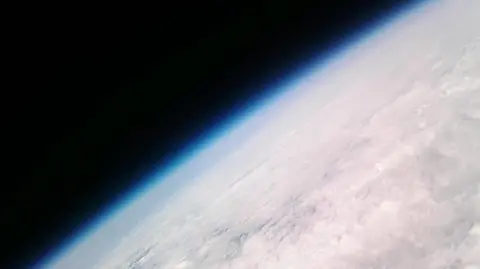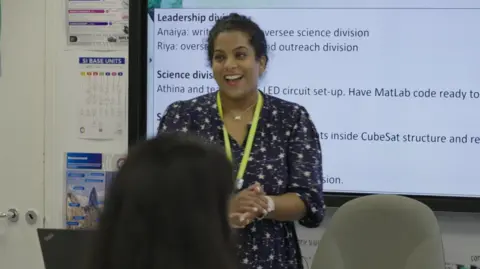Helen DrewPolitics London
 BBC
BBCA south London school is on track to become the first all-girls school in the world to send a satellite into space.
The independent Croydon High School has designed and built a working satellite which they aim to launch into low-Earth orbit in the next couple of years.
They hope the plan, called Mission Pegasus, will inspire girls to take on science, technology, engineering and maths subjects, known as STEM, where females are still under-represented.
In 2023, members of the school’s Stargazers Club launched and retrieved two experimental high-altitude weather balloons that reached the edge of space.

Kaweng, 14, said the group hopes the satellite will be able to take readings of different wavelengths in the atmosphere.
She told Politics London: “From this we can tell what different chemical compositions are in the atmosphere, which can also tell us the quality of air and this can contribute to climate science.”


Their missions are guided by their head of physics, Arabi Karteepan, in partnership with the University of Bath.
She said: “There is a lack of girls, there’s an imbalance in gender in the STEM field, particularly in space science too.
“And I had a love for space science from a very, very young age and I’ve been very passionate about it.
“Trying to show girls and trying to pave the pathway for them.
“To show that something that you think is impossible is actually possible, and showing them the means, and how’s, and how we go about, and how we get to that destination, is very, very important.”

Anaiya, 15, said her favourite subjects are physics and maths and she wants to pursue astrophysics as a career.
She said: “I think representation really matters and what we’re doing represents girls in STEM really well, because when girls see themselves in positions like what we’re doing – building satellites, engineering code, speaking to real world scientists – then they believe that that’s possible for them to do (that) as well.”
Watch the latest edition of Politics London on the BBC iPlayer.
Source link



